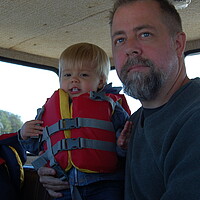South Carolina school shooting: Campuses on edge over shooters, real and imagined
| ATLANTA
The arrest late Friday night of a young man in the shooting death of football player Brandon Robinson at South Carolina State University, a historically black college, came as small comfort for a country that witnessed five incidents of school shootings, lock downs, and gun scares in a single week of school.
The question for a lot of Americans this weekend is whether the rash of alarms – which, if they keep up, could put 2014 as a record year for attempted and actual school shootings – point to a long-debated societal problem with gun proliferation or whether the constant barrage of school shooting news has more to do with jumpy administrators and social media buzz than an actual increase in campus violence.
A tense week that began on Monday with a gunshot injuring a student at Widener University near Philadelphia continued on Tuesday with the death of a Purdue University teaching assistant, and ended on Friday with the South Carolina State University shooting.
The incidents came on the heels of a shooting last week at a New Mexico middle school where two students were hurt, and a number of other lockdowns of schools ranging from North Carolina Central University to Yale. Someone either fired or threatened to fire a gun at a US school 28 times in 2013, according to Mayors Against Illegal Guns, a gun control advocacy organization, with eight of those incidents occurring at colleges.
“If the trend holds, we can look forward to maybe thirty or forty school shootings in 2014,” writes William Rivers Pitt for the progressive Truthout website.
To be sure, the shootings and alarms are bringing renewed focus on gun violence in American schools, a year after President Obama and other Democrats pushed unsuccessfully for federal gun control legislation. But while the near daily drumbeat of school shooting news unnerved lots of Americans, the fact that at least some of shootings didn’t seem random underscored a sense of ambivalence, what ABC News’ Colleen Curry called “gun violence fatigue.”
At Purdue, for example, the student was killed by a fellow teaching assistant. Police in South Carolina say they don’t yet have a motive for why 19-year-old Justin Singleton allegedly killed 20-year-old student Brandon Robinson, a member of the school’s football team. Police are still looking for three other people who may have been involved, though they say they have the gunman in custody. A student at the same school was shot and killed on campus in 2011 in a botched drug deal.
“I think we were so shocked and horrified by Sandy Hook that it’s in our consciousness. And when we think of a school shooting and it’s something like in Purdue, where it appears there was a grudge or a rationale for it, it wasn’t a random school shooting … that’s not a national event any more than most other shootings would be,” Bill Bond, who endured a school shooting as principal of Health High School in Paducah, Ky., told Ms. Curry at ABC News.
Moreover, pro-gun advocates took to the conservative air waves to push for the elimination of so-called “gun-free zones” intended to keep areas with children and young adults free from guns. They say it’s no coincidence that so many shootings occur where gunmen can feel less threatened by a possible counterattack.
“What happened in gun-free zones when they were first established is the same thing that’s happening today: crime escalated,” says Jerry Henry, the director of Georgia Carry, a pro-gun group working to make it legal to carry guns for self-defense on campuses.
For its part, the Bureau of Justice Statistics has reported that gun free zones are generally safe for young people, with deaths occurring in those places never exceeding two percent of total youth homicides in the US every year.
New reporting rules put into place after the Virginia Tech massacre in 2007 have played a role in the heightened awareness, forcing school officials to immediately report any potential disturbance and to lock down campuses at the first hint of danger.
Social media, too, is playing a role in amplifying even campus incidents that turn out to be no big deal – witness the November 2013 lockdown at Central Connecticut State University for a gunman who turned out to be a student in a Halloween costume. This Wednesday, University of Oklahoma officials locked down the campus after mistaking a backfiring bulldozer engine for gun shots.
"I don't think there's any greater level of danger, but our response to it is much different than it used to be," Northeastern University criminology professor James Alan Fox told the Los Angeles Times. "You've put colleges in a position where they have to err on the side of caution, and unfortunately they err a lot on the side of caution."





